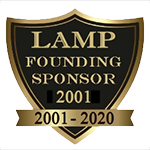eMoviePoster.com
Did you know... that almost every country used different sizes of posters, but that there were mostly standard sizes within each country?Return to Did You Know Archive Added: 01/20/2014 Whenever a collector begins collecting posters from ANY country that they have never purchased before, the different sizes can be VERY confusing, because they almost always drastically vary from country to country. Here we describe the different sizes of posters used by country. We provide the information we know about each country's posters (especially the sizes of their posters). This does not comprehensively cover all countries that printed movie posters, but it does cover the more popular countries (and we list them alphabetically). NOTE: If you have information to add about any of the below whether it be additional poster size descriptions, corrections, historical information, or ANYTHING ELSE worth noting, please contact us so we can update our information! Argentinean posters measure approximately 29" x 43" (slightly larger than a U.S. one-sheet) and are typically printed in the Spanish language. Many U.S. movies were reissued years later in Argentina with new posters, and it takes some knowledge to know what Argentinean posters are original release and which ones are Argentinean re-releases. When buying Argentinean posters, one should always be sure that the seller guarantees the originality of the posters. Sometimes Argentinean posters have artwork (by artists like Venturi) that is far superior to that of the U.S. poster.
Australian daybills measured approximately 15" x 40" from the 1920s through the late 1930s (these are called "long daybills"). They are FAR more scarce than daybills from after this time (you can not find long daybills on most pre-1940 movies, and on the few you can find them from, there is often only one known example or a few known examples, except in the rare cases where someone found multiples of a single title).
Belgian posters (from after World War II) usually measure approximately 14" x 22", although they sometimes vary quite a bit.
Prior to World War II they were much larger and usually measured around 25" x 34". There are other, more rare sizes
from during World War II that measure approximately 12" x 17" (few of either size survives, due to the Belgian paper shortage
at that time that caused most posters to be destroyed). Unlike posters of many other countries, Belgian posters can be printed horizontally or vertically
in the same size (although the majority of them have vertical images). Sometimes there is both a
"vertical" poster and a horizontal poster for the same movie! Danish posters are almost always printed in the "A1" size measuring approximately 23" x 33", although they can vary by up to 1". Danish posters (especially prior to the 1970s) usually have completely different artwork than posters from other countries and older posters can be difficult to find. East German posters (made from 1949 to 1990) can often contain quite striking artwork (similar to that of Polish posters). Non-Russian/Non-East German films would often be released from a couple years to several years after it's initial release elsewhere in the world; albeit this was so the powers that were could check for subversive materials in the film before the East German public would be allowed to watch such films. The most common East German sizes are "A1" which measure 23" x 33", "A2" which measure 16" x 23", and "A3" which measure 11" x 16".
English posters are among the most confusing of all posters! England has an odd history of movie poster sizes! Before World War II, the sizes mostly corresponded to U.S. sizes, except strangely most of the names were "doubled" (U.S. three-sheets were English "six-sheets", U.S. six-sheets were English "twelve-sheets", etc.).
The few British Quads that have survived from the 1930s DO measure 30" x 40", but they are a
vertical format rather than a horizontal one! British quads are similar to U.S. one-sheets, but they are horizontal instead of vertical, and they measure 30" x 40". Most from before 1980 are folded. Many collectors like British quads because they display horizontally instead of vertically (similar to a half-sheet, but twice the size). "English Front of House lobby cards", which, despite their name, much more closely resemble U.S. stills. These normally come in sets of 8 or 12, and have an English rating on them, and of course, no NSS information. They can be either color or black & white which is indicated in our description above. English lobby cards are lobby cards that look very similar to regular U.S. lobby cards, but are marked "Printed in England", "Made in Great Britain", or something similar. They are almost always from movies that were made in Great Britain, and usually there is a U.S. lobby card set for the same title. However, the original English lobby cards are far more rare. There are several standard sizes of French posters although the measurements can vary depending on studio and year. Although there are other sizes as well, the standard sizes are as follows:
German posters (short for "West German" posters) come in various sizes (see below), although the most common German size is the "A1", which measures 23" x 33". German posters usually have completely different images than U.S. posters, often with wonderful artwork. They are virtually always a consistent size, so if a poster has measurements that are different from the size listed, it is likely either a special size, is trimmed, or is from a different country (collectors sometimes confuse Danish and Dutch posters for German, but they use completely different languages, although the untrained eye may have difficulty telling the differences). It's also important to note that during World War II, U.S. movies were not distributed in Germany, but many U.S. films from that time frame (approximately 1939 to 1945) were eventually released in Germany in the 1950s or later. These are referred to as "first release" because they are from the "first release in Germany".
One final note: there are also "East German" posters which are completely different from (West) German posters, and are far more rare. They often measure the same as West German posters, but are easily identifiable by the "Progress Film" logo present on them, which is the bureaucratic entity that handled exclusive distribution in East Germany. Italian posters most often come in five sizes.
See Also: Japanese posters varied in size prior to World War II, but very few of them survive, and they are extremely scarce! After World War II, the Japanese posters became standard sizes as follows:
Mexican lobby cards typically measure 12" x 17" or so, but there are also some that are somewhat larger, and there are also ones that measure exactly 11" x 14". All are printed in the Spanish language, and almost all are on a heavy paper stock similar to that of U.S. lobby cards Polish posters are most commonly seen in two sizes, 23" x 33" and 26" x 38", although they can vary slightly from these sizes, and there are also much smaller and much larger Polish posters, although those are rarely seen. The most notable aspect about Polish posters is their often wild surrealistic art, often having only the slightest connection to the movie they are advertising! Most Polish posters are often valued far more according to the artist and the quality of the image rather than by the movie that is advertised. Russian posters measure various sizes. Because the Russian alphabet bears no relationship to the English alphabet, it can be very difficult to determine what movie a Russian movie poster is advertising! We have people who read Russian determine that we are listing each Russian poster we sell under the correct title! Also, there are often "export" posters for Russian movies that were printed in other languages such as French or English that were made to be used when those movies were shown in other countries! Spanish posters (the ones that were printed in Spain) often are slightly smaller than U.S. one-sheets (around 27" x 39"), and normally have completely different art from that of the U.S. posters. Note that in the 1930s to 1950s, U.S. studios often printed posters for their U.S. releases with the exact same artwork, but with Spanish writing (often with a "Toda En Espanol" added to the image), for use in U.S. theaters with primarily Spanish-speaking audiences but these are NOT posters from Spain! These are U.S. posters printed in Spanish, and are not to be confused with Spanish posters from Spain! Swedish movie posters can vary in size quite a bit, but are most commonly found in three sizes: 23" x 34", 27" x 39" (often referred to as "Swedish one-sheets"), and 12 1/2" x 27 1/2" (known as a "Swedish stolpe" and sometimes referred to as a "Swedish insert"). The 23" x 34" and 27" x 39" sizes often have distinctively striking artwork that is completely different than that found on posters from all other countries. Stolpes, on the other hand, are more like a cross between U.S. heralds and window cards with a blank area that theaters could imprint their name and show dates. Turkish movie posters are similar in size to U.S. one-sheets, and often measure 27" x 39". They often contain both the Turkish title and the U.S. title in large letters, but some have the English title in small letters, and some have no English title at all. They almost always have very different graphics from the U.S. posters, and sometimes they have artwork that appears on no other poster! They are printed on a paper stock similar to that used for pre-1960s U.S. one-sheets. Turkish posters are not dated, so it is difficult to know exactly when the poster was released, but it seems likely that most of them date from after the first U.S. release, but usually likely within a few years of the U.S. release (except in the case of a much later re-release). If we have a guess as to when the Turkish poster was released, we put it on the auction, but otherwise we put the original year of release. Please do not buy any Turkish posters unless you can live with the uncertainty as to when they were released.
The most common Yugoslavian poster size is around 19" x 27" but other sizes (such as 27" x 39 1/2") also exist. Yugoslavia fragmented into separate countries during the 1990s. For the sake of simplicity, we still list posters from the new countries (such as Serbia, Croatia & Bosnia) as Yugoslavian. Next week we will cover all common U.S. sizes! See Also: 

Postal Mailing Address:
Bruce Hershenson, P.O. Box 874, West Plains, MO 65775. (For our UPS or FedEx address, click here) phone: +1 417 256-9616 fax: +1 417 257-6948 E-mail: Contact Us Hours of Operation: Monday - Friday 8:30 AM - 12:00 PM & 1:00 PM - 5:00 PM (CDT) |
|||||||||||||




